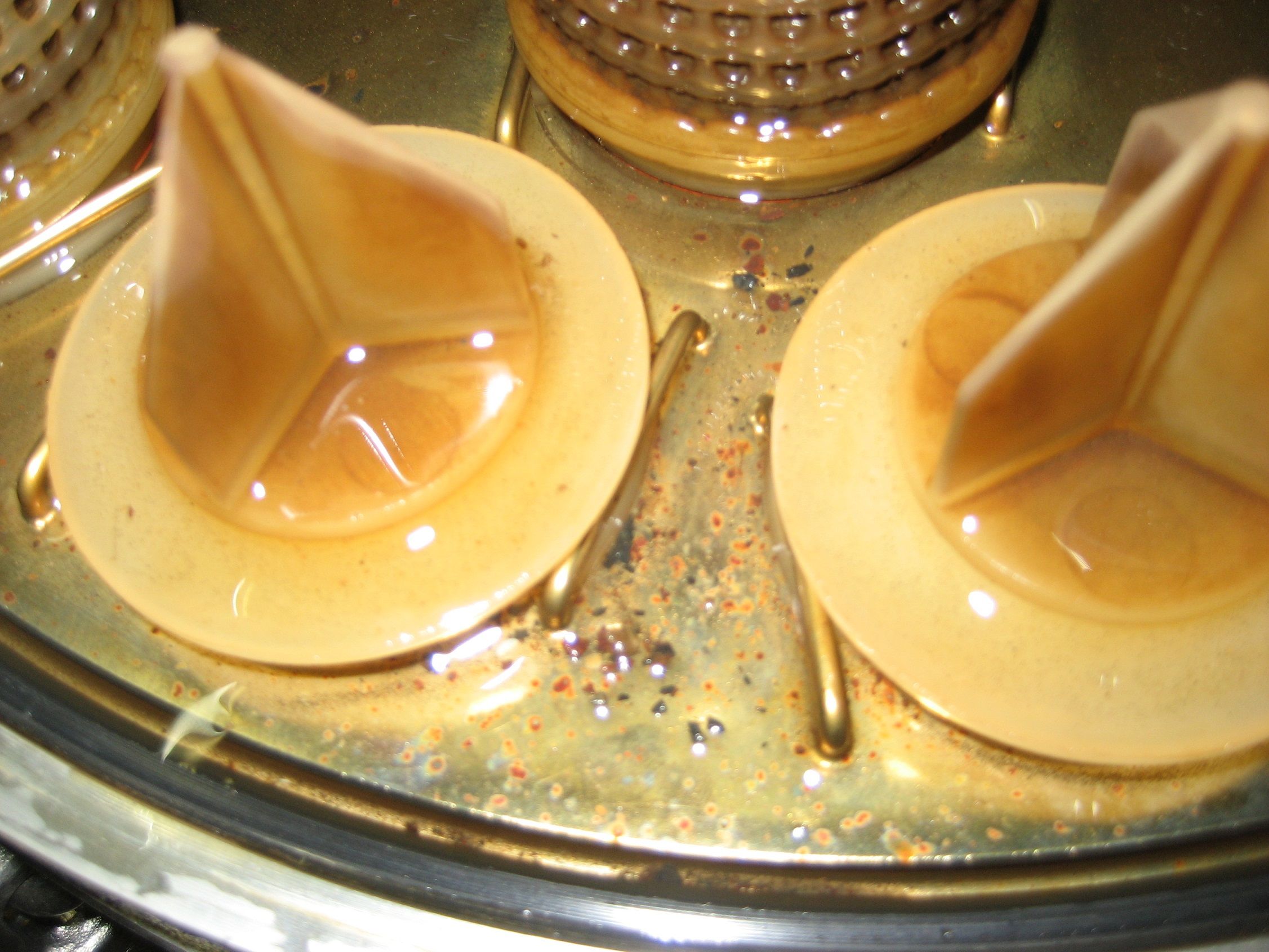
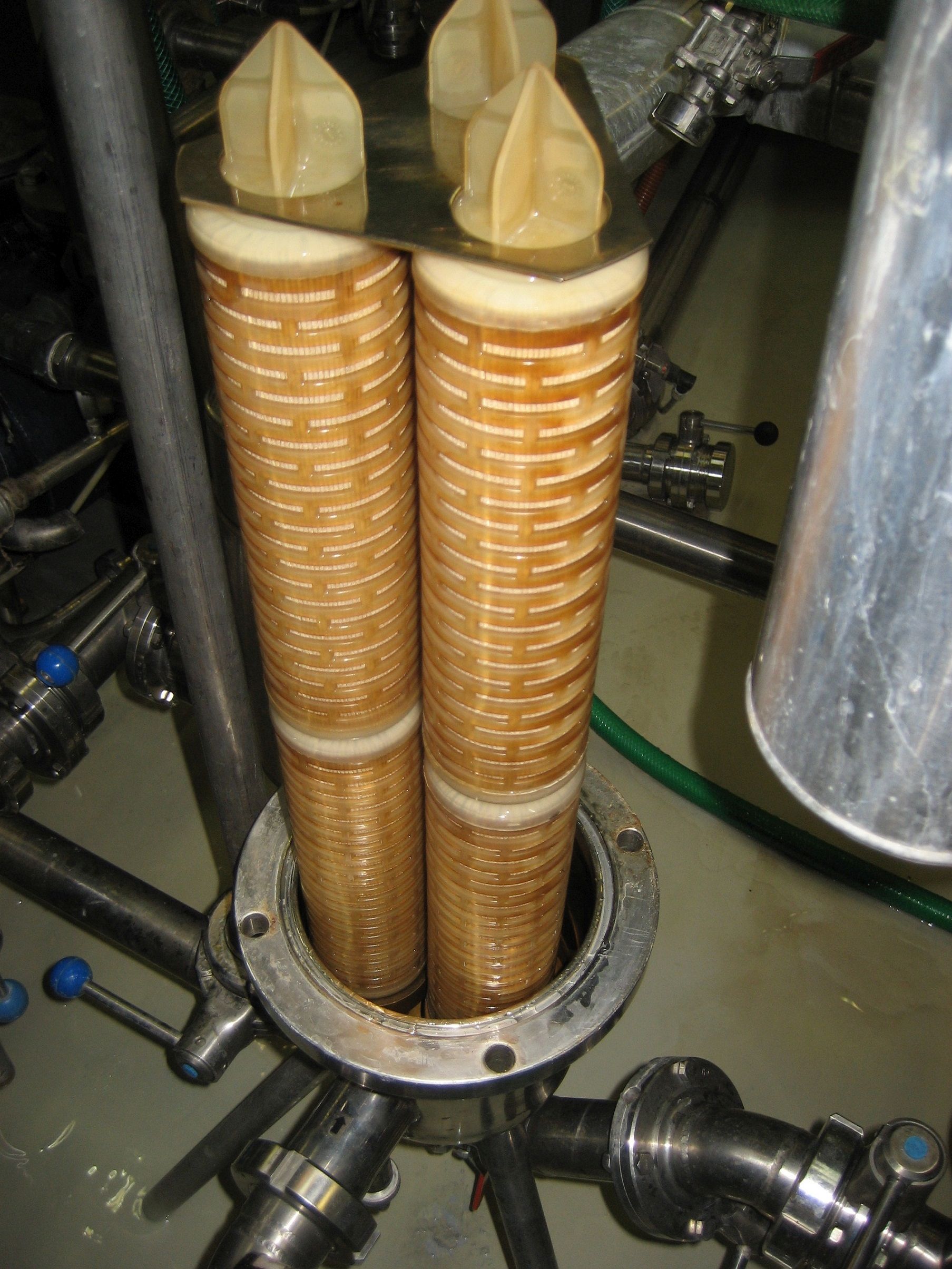
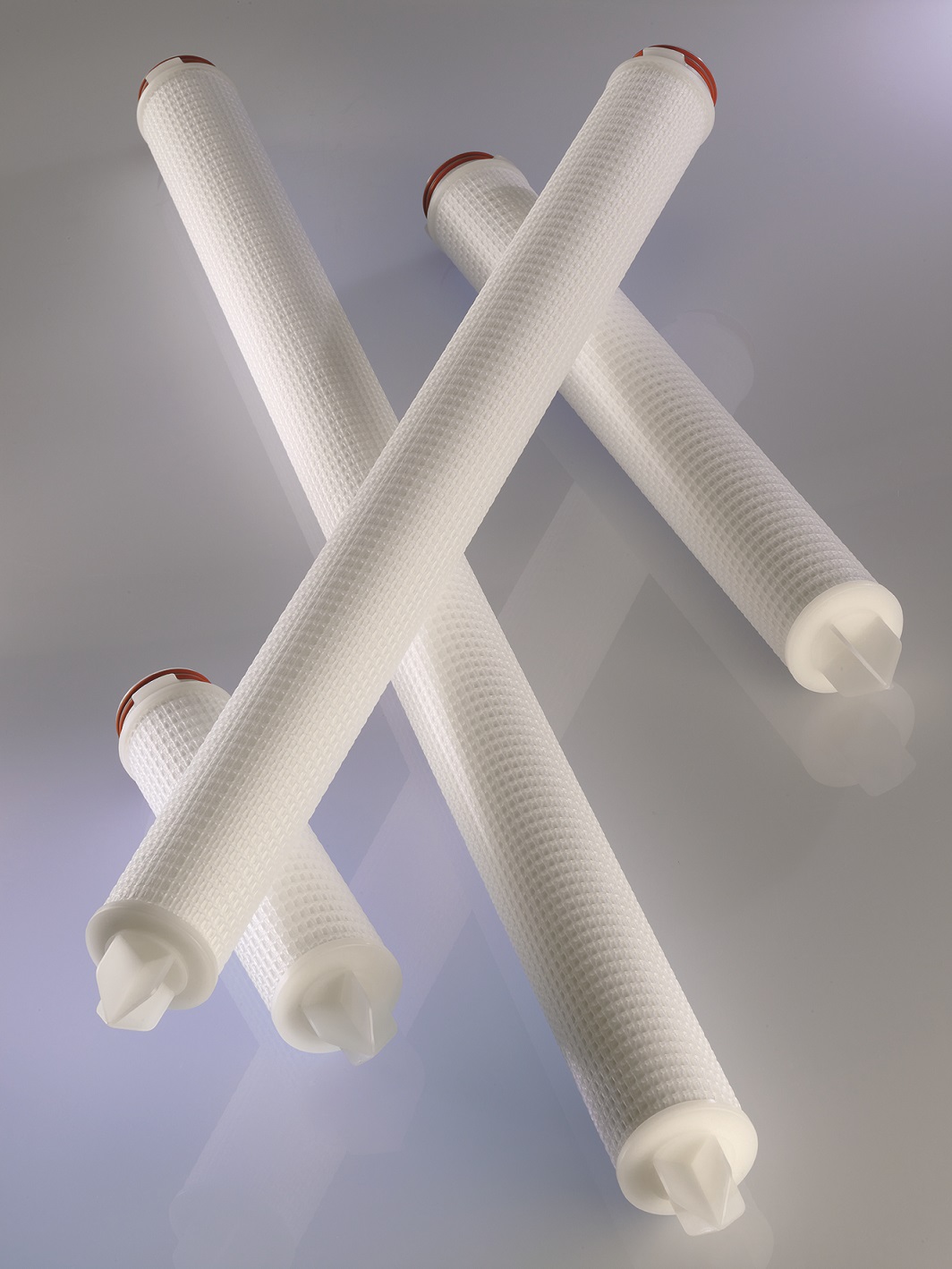
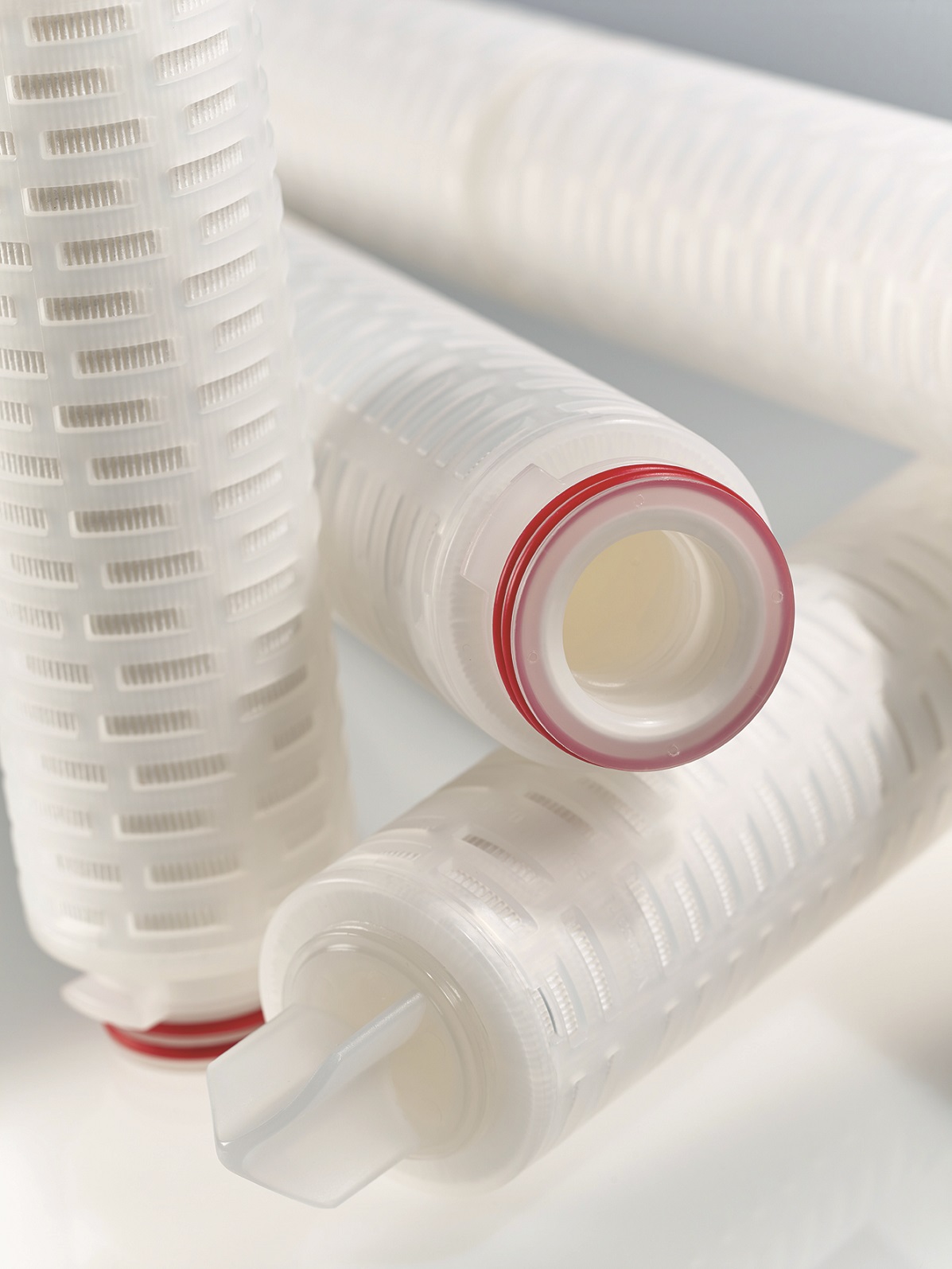
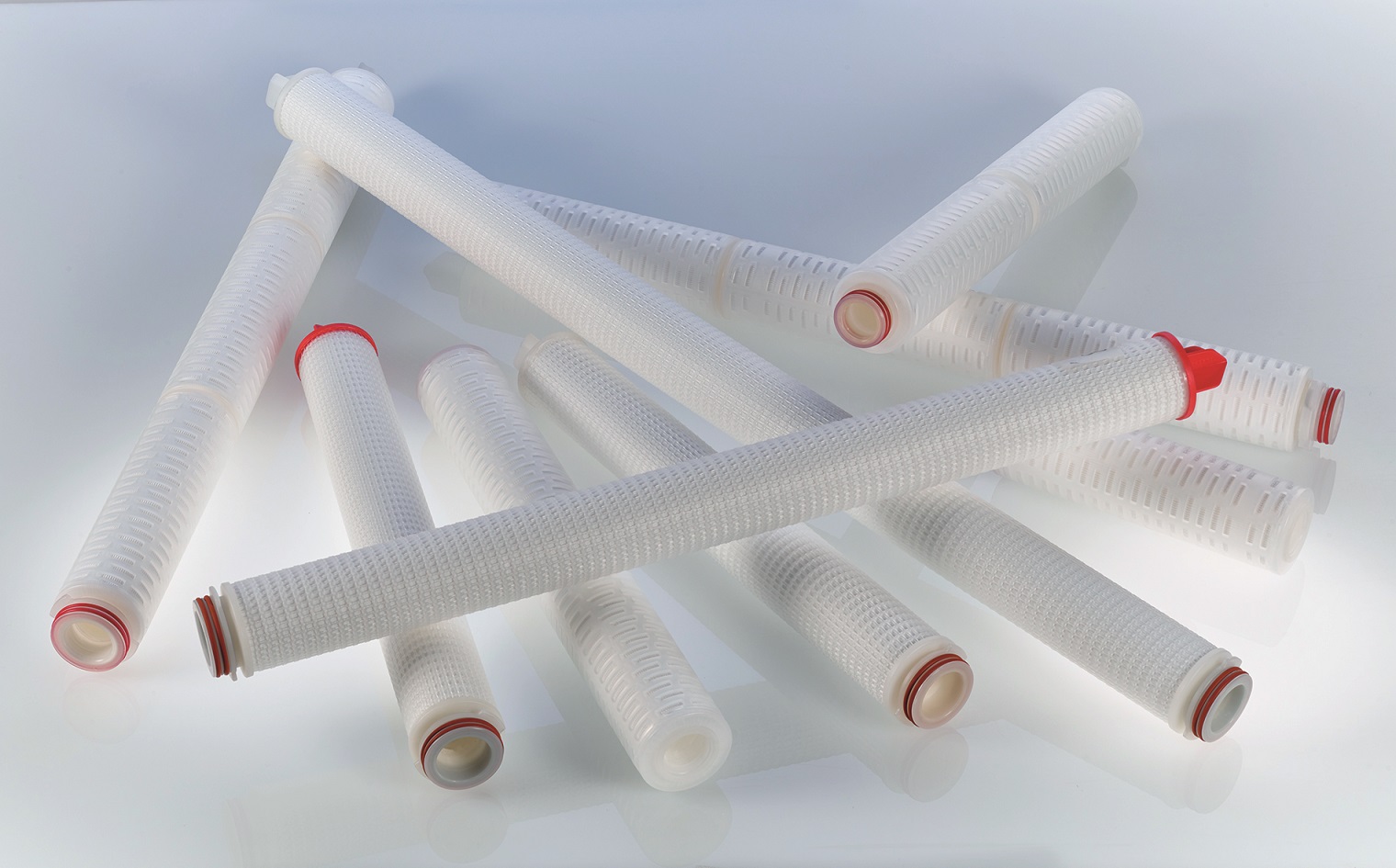
Process water is a critical factor in industrial facilities and for manufacturing products and must meet the highest quality requirements. But what if the quality of the process water is not good enough?
A process analysis helps find the cause of the problem when filter media get prematurely blocked or does not perform sufficiently. In many cases, the problem is not caused by an ineffective combination of filter media or poor filtration performance of the end product, as one might expect, but by a completely different culprit: process water. Process water comes into contact with all materials and equipment involved in the process as it cleans and rinses. Therefore it takes its own particle load through the entire process all the way to the bottle. Since some particles may have a negative influence on the process or product to be filtered, it makes sense to take a closer look at the source and composition of this process water.
Source The beverage industry primarily uses tap water (drinking water) and well water (spring water). It is used as boiler feed water; cleaning and/or rinsing water for bottles; reservoirs; winery equipment; and bottling plants (including filter media). For this, it has to meet very strict purity criteria.
The physical, chemical and microbiological characteristics of tap water are specified in the German drinking water regulation (Trinkwasser-Verordnung - TrinkwV). The regulation states: “Drinking water must be of such quality that its consumption or use do not give rise to concerns about damage to human health, especially by pathogens. It must be pure and fit for human consumption.” The regulation also clearly specifies the microbiological profile. According to appendix 3, a reference value of 100 cfu/ml (incubation temperature 20°C ± 2°C and 36 °C ± 1°C) shall not be exceeded. In disinfected drinking water, the reference value after treatment is just 20 cfu/ml (incubation temperature 20°C ± 2°C). For drinking water to be defined as pure and fit for consumption, it must also be virtually free from pathogens, such as Escherichia coli (E. coli), coliform bacteria or fecal streptococci. If the microbiological detection method finds fecal streptococci (on a 100 ml scale), it is not fit for consumption. The threshold for E. coli and coliform bacteria is deemed to have been met if in 40 tests, at least 95% are free of coliform bacteria [1].
The source of well water (spring water) is underground water resources that can be extracted from one or more naturally or artificially tapped sources. The microbiological requirements are the same as the requirements for drinking water. Spring water must also be virtually free of pathogens. This requirement is met if no E. coli, coliform bacteria, fecal streptococci or Pseudomonas aeruginosa are detected in a 250 ml sample. Moreover, 50 ml spring water must not contain any sulphite-reducing sporulated anaerobes. When collecting and filling spring water, it may only contain such viable micro-organisms that do not give any indication of contamination.
The various water types may contain numerous foreign substances and contamination of a molecular, colloidal and coarsely dispersed nature. Filtration processes may be adjusted to each individual process to remove foreign substances such as particles, iron, lime, rust and sand from the piping, as well as micro-organisms such as bacteria, yeasts and moulds to ensure optimal water quality. In the past, mainly natural depth filters were used in the main (gravel or sand bed filters). Today, depth and membrane filter cartridges are methods of choice.
In this respect, membrane filter cartridges can be considered as an effective filtration method for process water. These filters contribute to process safety because they can be tested for integrity before filtration, i.e. to confirm their functionality. Compared to chemical water preparation processes using chlorine and ozone, they have two additional advantages: after filtration, the water is tasteless and can be used immediately.
Filtration In wineries, process water is often prepared using filtration systems containing depth and membrane filter cartridges which remove particles and micro-organisms, or in preparation plants that soften and demineralize the process water. Table 1 shows commonly utilized filter cartridges and filter cartridge combinations which are inserted to filter feed water for boilers and clean bottles; reservoirs; winery equipment; and bottling plants in different wineries in Germany.
| Winery | Process Water source | Retention rate depth filter cartridge | Retention rate membrane filter cartridge |
|
Company I |
Tap water | None |
None |
|
Company II |
Tap water | 0.3 µm |
None |
|
Company III |
Tap water | None |
0.45 µm |
|
Company IV |
Tap water | 0.3 µm |
0.2 µm |
|
Company V |
Tap water | 30 µm |
None |
|
Company VI |
Tap water | 1.0 µm |
None |
|
Company VII |
Tap water | 0.2 µm |
None |
The cross-section from the field shows that depth filter cartridges with different nominal retention rates are used to filter process water and are supplemented (company IV) or replaced (company III) with membrane filter cartridges, as required. Company I does not even use process water filtration. But why is the approach so different even when all companies use tap water as process water? To answer this question, the process water of companies I, II, III and IV has been analyzed.
Filtration and particle load To determine the filterability and particle load, a filter index measurement using the Beco LiquiControl2 index measuring device has been performed. The device's storage reservoir is filled with 5 litres (1.6 gal) of process water and filtered via a 0.45 µm flat filter membrane (test membrane disc) at a constant pressure of 1.0 bar (14.5 psi). The initial flux is measured after 200 millilitres (0.05 gal) and the end flux after 5 litres (1.6 gal). The filterability is determined based on the filtration volume achieved per minute. The water quality is best if the end flux (flow rate) is greater than 400 ml/min (0.1 gal/min). It was possible to filter the 5-liter samples of all companies that had been examined and filterability was graded from easy to average (see figure 1). If the process water is difficult to filter, a tight pre-filtration improves filterability by reducing particles and contamination.
The test membrane discs are visually evaluated in addition to the filterability results. The residues provide information regarding the particle load and the test membrane discs are specifically inspected for iron residues using the ferri-ferro test. If particles such as iron, lime and rust are detected, they may leave a layer of dirt on the filter cartridges. This layer of dirt reduces the filtration performance (flux) and service life and may lead to a full blockage of the filter cartridges (see Figures 2 and 3).
Company I uses unfiltered process water. The index measurement shows that it can be easily filtered. The heavy layer of dirt on the test membrane disc indicates a substantial dirt load and the ferri-ferro test detects iron. The iron detected indicates rust deposits in the piping system. The iron residues may clog the surfaces of the filter media, thus significantly reducing their performance and service life.
The process water in company II has an end flux of 296 ml/min and is thus categorized as difficult to filter. To improve filterability, it is filtered with a depth filter cartridge with a retention rate of 0.3 µm. After the cartridge filtration, filterability improves significantly and the end flux is at 510 ml/min. The microbiological test detected bacteria and yeasts in the unfiltered process water (see table 2). The cartridge filtration removed the yeasts and reduced the bacteria.
Company III had a layer of dirt on the test membrane disc after the index measurement of the unfiltered process water. After filtration with a 0.45-µm membrane cartridge, no dirt layers were visible. The microbiological test showed that the process water was free of yeast and bacteria, but contained a high silica sol concentration (data not shown). The water filterability with an end flux of about 400 ml/min can be classified as easy. It is noteworthy that filterability does not improve any further, despite effective filtration. This suggests that this is caused by the silica sol concentration.
Company IV has high requirements of the microbiology of the process water used. To ensure that the water is free of bacteria and yeasts, a depth filter cartridge with a nominal retention rate of 0.3 µm and a membrane filter cartridge with an absolute retention rate of 0.2 µm are set up in sequence. The index measurement with an end flux of 487 ml/min indicates that the water can be easily filtered and the test membrane disc shows no visible layers of dirt. The results of the microbiological test prove that the process water is free of bacteria and yeasts (data not shown).
Microbiology Aside from determining filterability, the microbiological load in the process water has been analyzed according to the German unified process (DEV) and the Drinking Water Regulation for rinsing water and foodstuff samples. For this, samples of unfiltered and filtered process water were extracted. All samples complied with the threshold values of the Drinking Water Regulation.
In addition, the microbiology of the unfiltered and filtered samples was tested. The results are presented in Table 2.
|
Sample (tap water) |
Germ count | Identification bacteria |
Identification yeasts |
|
Unfiltered |
~ 50 cfu/ml | Microbacterium spp., Mycobacterium spp. |
Cryptococcus spp. (Candida flavescens or Candida albidus) Pichia fermentans |
|
Filtrate depth filter cartridge (0.3 µm) |
7 cfu/ml | Microbacterium spp. |
n. e. |
|
Filtrate depth filter cartridge (0.3 µm) |
9 cfu/ml | Microbacterium spp., Rhodococcus spp. |
n. e. |
The results of the microbiological test show that the unfiltered sample (tap water) contained both bacteria of the types Microbacterium spp. and Mycobacterium spp. as well as yeasts of the types Cryptococcus spp. and Pichia fermentans.
The metabolic products of the Microbacterium spp. bacteria have a negative impact on beverages. Their growth is stimulated by oxygen. Lack of oxygen and temperatures below 15°C and a pH-value of 4.5 have a growth-retarding effect. Mycobacterium spp. bacteria can be found in the earth and in water and are not deemed to have a negative impact on beverages.
Cryptococcus spp. and Pichia fermentans are breathing yeasts. They require large volumes of oxygen for their metabolism. They do not survive in wine due to a lack of sufficient oxygen.
The results of the microbiological testing of the water samples after filtration show that the 0.3-µm depth filter cartridge removed the Mycobacterium spp. bacteria and the yeasts. Microbacterium spp. bacteria were not removed. Since they require oxygen to reproduce, they cannot survive in wine and have no impact on the end product’s quality and stability.
Furthermore, bacteria of the type Rhodococcus spp. were detected. The cause of this secondary contamination is unknown. The bacteria are mainly found in the water and in the earth.
Conclusion Process water and also piping systems contain particles and bacteria. Their impact and influence on the production process can be seen in the practical results presented. Process water can contain various dirt particles (iron, lime, rust, sand) and microbiological contaminants (bacteria, yeasts, molds). When the 'water tap is opened', it distributes its particle load through the entire production process all the way into the bottle. In this process, dirt deposits and films may considerably limit the functionality of equipment, systems and filter media and lead to hygiene problems. Hence, the condition, cleaning and maintenance of the entire system, particularly the piping, play an important role.
For an optimum production process, the filtration stages of the liquid flows (product and process water to be filtered) and the cleaning and rinsing of the system must be aligned with each other. Determining the filterability and identifying the particle load of the process water used helps determine an appropriate filtration solution for this stage of the process. The most effective filter cartridge combinations can be determined based on the results. This protects all process components from contamination and the efficiency of the filter media for product filtration is increased. This provides an important contribution to the protection of the end product’s quality, since high quality is the desired result, which is achieved if the process water is not only clear, but also clean.
The recommendations for process water filtration including filter cartridge regeneration intervals are summarized in table 3.
|
Process |
Filtration objective | Filter cartridges | Retention rates |
Regeneration interval |
|
Well water without water preparation |
Retention of dirt particles (sand, rust) and water free of lime, bacteria and yeasts | Depth filter cartridge Membrane filter cartridge | < 1.0 µm 0.2 µm |
Daily |
|
Tap water without water treatment |
Retention of dirt particles (sand, iron) | Depth filter cartridge | 1.0 µm |
Weekly |
|
Tap water with water treatment (softened, demineralized) |
Retention of dirt particles and lime | Depth filter cartridge | < 1.0 µm |
Weekly |
|
Rinsing water, rinser/bottling plant |
Rinsing water free of yeasts and bacteria | Depth filter cartridge Membrane filter cartridge | 0.3 µm 0.2 µm |
Daily |





